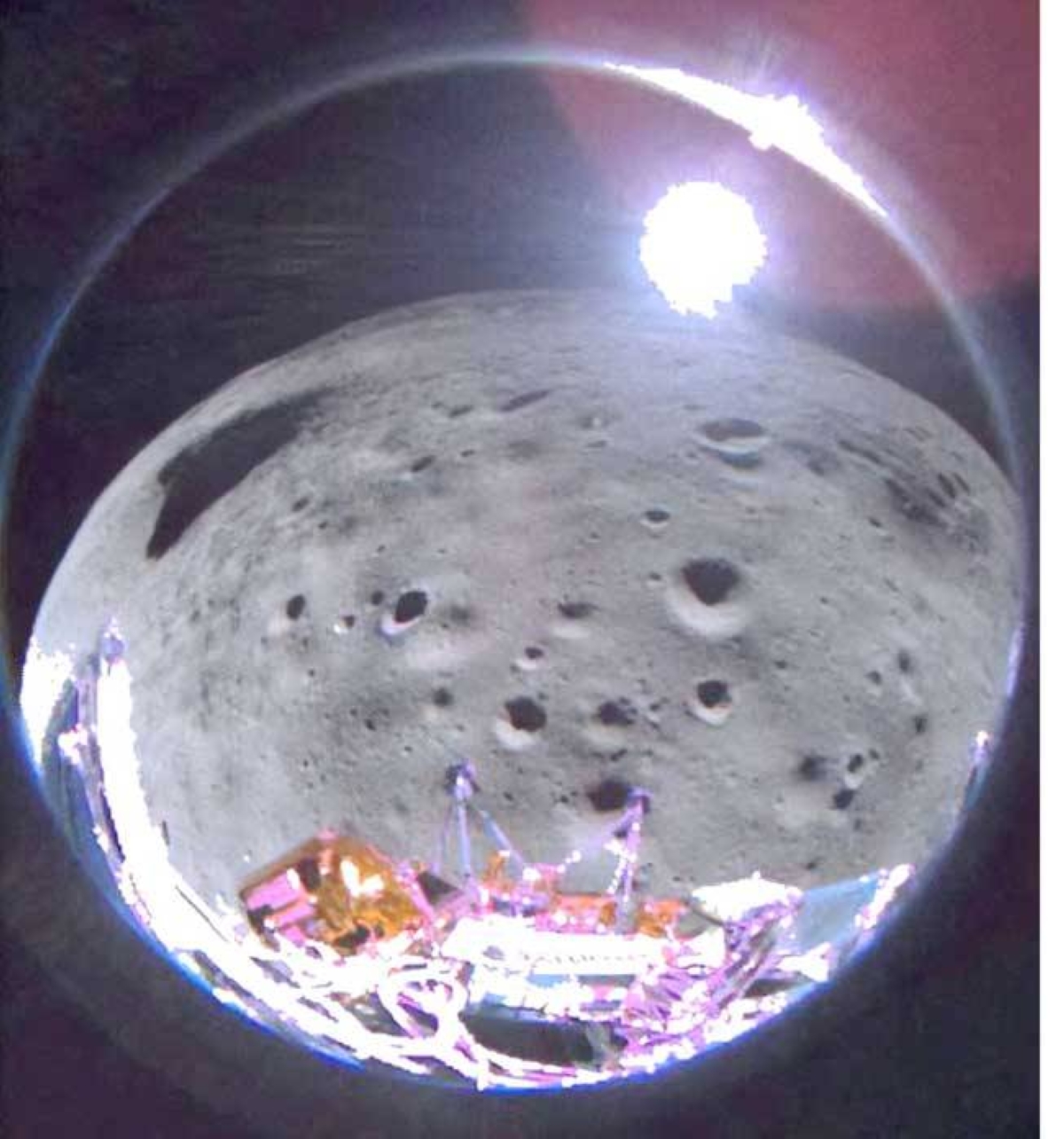An American lunar lander, named Odysseus, has made history by landing farther south on the Moon than any previous vessel. The unmanned spacecraft, built by Houston-based Intuitive Machines, successfully returned the United States to Earth’s cosmic neighbor after a five-decade absence, marking a significant milestone for the private sector’s involvement in space exploration.
During the touchdown, however, one of Odysseus’s legs caught on the lunar surface, causing the lander to tip over. Despite this unexpected setback, the mission was saved by the quick thinking and ingenuity of the team, who improvised a fix to stabilize the spacecraft.
Intuitive Machines provided an update on the mission, stating that Odysseus is still communicating with flight controllers from the lunar surface. The update also included two images: one captured during the hexagon-shaped lander’s descent and another taken 35 seconds after it toppled over, revealing the pockmarked soil of the Malapert A impact crater.
This achievement is part of NASA’s larger plan to return astronauts to the Moon later this decade. As part of this initiative, NASA delegated cargo missions to the private sector, awarding Intuitive Machines a contract worth approximately $120 million. This partnership aims to stimulate a commercial lunar economy and advance scientific understanding of the lunar south pole, which is the intended destination for future human missions under NASA’s Artemis program.
Unlike the Apollo missions, which focused on short-term stays, NASA’s plan for the Artemis program involves establishing long-term habitats on the Moon. These habitats will utilize polar ice for drinking water and as a resource for producing rocket fuel for future missions to Mars.
In addition to Odysseus’s accomplishments, NASA’s Lunar Reconnaissance Orbiter (LRO) probe captured images of the 4.0-meter tall “Nova-C” class lander. The photographs were taken at a location within 1.5 kilometers of Odysseus’s intended landing site. The student team responsible for an external camera, known as EagleCam, expressed optimism that it could still be deployed from the fallen lander and capture photos from a distance of approximately 4 meters.
The successful landing of Odysseus is a testament to the progress made in the private sector’s involvement in space exploration. It demonstrates the capabilities of companies like Intuitive Machines to contribute to scientific research and pave the way for future human exploration of the Moon and beyond.
As NASA continues to push the boundaries of space exploration, collaborations with private companies will play a crucial role in achieving these ambitious goals. The images sent back by Odysseus provide valuable insights into the lunar south pole and serve as a reminder of the vast potential that lies within our cosmic neighbor.
Source: The Manila Times





